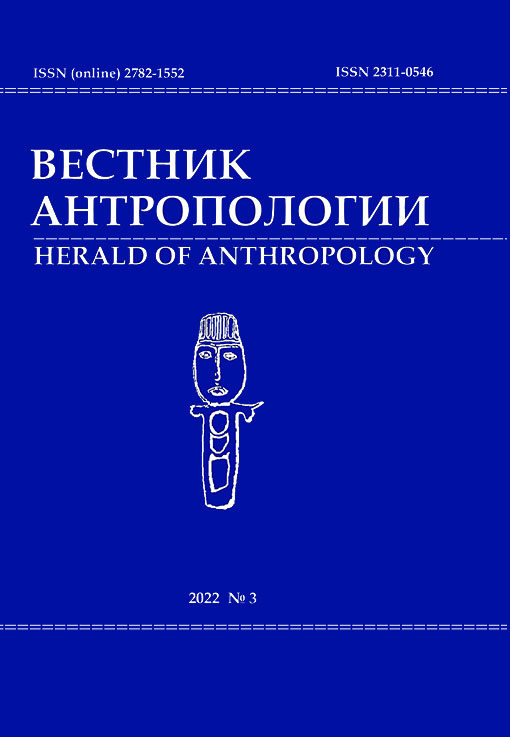Under a Different Name… The Gagauz of the North Caucasus
10.33876/2311-0546/2022-3/158-179
Keywords:
The Gagauz, Bulgarians, migration, Bessarabia, the Azov Sea region, the North Caucasus, ethnic identity, mother tongue, interethnic marriagesAbstract
The article attempts to define timeframes for the appearance of the Gagauz from Bessarabia and the Azov Sea Region in the North Caucasus, more precisely in Kuban and Tersk regions. At the moment these Gagauz live in Mozdok region of North Ossetia — Alania and in Prokhladnensk district of Kabardino-Balkaria. The Gagauz first appeared in Malaya Kabarda under the name of Bulgarians. The history of Gagauz and Bulgarian relocation from the Balkan peninsula to the southern regions of Bessarabia, Budzhak, in the second half of the 18th — the beginning of the 19th century among Transdanubian emigrants, tells us that most of the time all
emigrants were officially registered in documents under the common title of “Bulgarians”. Relocation of some groups from Budzhak to the Azov Sea region, the North Caucasus, Kazakhstan and Uzbekistan, i. e. their separation from their ethnic “mainland” had taken place earlier than the Gagauz from Bessarabia started to develop their ethnic self-identity and realize they were the Gagauz. Their self-name as Bulgarians is preserved among a great number of Gagauz people in Kabardino-Balkaria and North Ossetia-Alania until today. A certain part of the Gagauz, who still remember their mother tongue, call it Bulgarian. The study identifies places from where the Gagauz ancestors emigrated to the North Caucasus, gives a detailed picture of the ethno-demographic dynamics, intereth
nic marriages of the Gagauz population in one of the big stanitsas of Kabardino-Balkaria –Stanitsa Ekaterinogradskaya. It is based on the materials from Russian population censuses, data from state archives of Kabardino-Balkaria, North Ossetia — Alania, Republic of Moldova, materials of rural household registers from Stanitsa Ekaterinogradskaya (Kabardino-Balkaria) in 1940–2000s and data from ethno-demographic studies carried out by the author among the Gagauz in stanitsas Sukhotskoe, Nizhniy Malgobek and Ekaterinogradskaya.





















